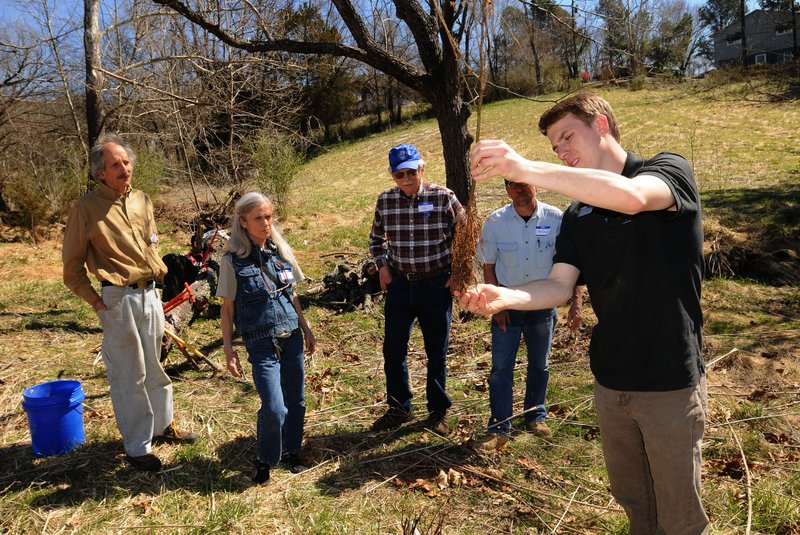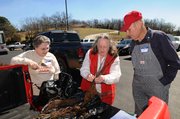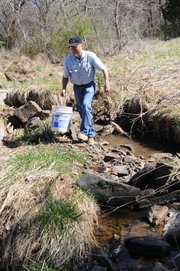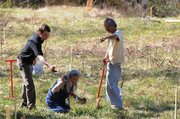Preventing erosion along small creeks is good for bigger streams like the War Eagle and White rivers. What benefits the White and War Eagle is good for the water quality at Beaver Lake, where most of Northwest Arkansas gets its drinking water.
Both rivers form the 31,000-acre lake, which supplies homes and industry. Thousands come to its clear water for fishing, swimming and camping.
Beaver Watershed Alliance
The Beaver Watershed Alliance works to protect, enhance,and sustain the high water quality of Beaver Lake and its tributaries through voluntary management practices, education and scientific evaluation.
Tributaries of Beaver Lake, including the west, middle, and east forks of the White River, Richland Creek and War Eagle River offer a variety of beauty, wildlife, and cultural heritage. From Harrison to Westville, Okla., more than 420,000 people rely on Beaver Lake for drinking water, industry and recreation.
Information: www.beaverwatershed….
What is a watershed?
The U.S. Environmental Protection Agency defines a watershed as “an area of land where all of the water that is under it or drains off it goes into the same place.”
Flooding along Northwest Arkansas' small and large streams can eat away at the banks of the smallest ditches and creeks, sending sediment into the water and making it a muddy mess. When this turbid water flows into Beaver Lake, it degrades water quality. Landowners lose property when chunks of their real estate fall into the water during floods.
Sediment pollution is the No. 1 source of water pollution in the nation. That's one fact landowners and others learned during a stream workshop held March 5 at the Carroll Electric Cooperative building in Huntsville. Another fact: This erosion can be prevented.
The Beaver Watershed Alliance hosted the event. Presentations from water quality experts explained the problem. Then, landowners and volunteers went to the water do something about it. They planted dozens of trees at two stream-bank sites to stabilize the shoreline and prevent erosion.
One group shuffled off to plant trees along a stream north of town. Another bunch drove to the home of Joe and Carol Doster. The couple can see downtown Huntsville from their front porch. They also enjoy a little spring-fed creek on their eight-acre place.
The creek joins a larger stream that flows into the War Eagle River. Joe noticed the creek getting a little wider after heavy rains last spring. He noted undercutting along some of the banks. Erosion was at work.
He called the Beaver Watershed Alliance for help.
Bryant Baker with the alliance paid a visit and took a look at the Dosters' creek. Grass was the only vegetation along the banks. Planting trees would help stabilize the land along the creek, Baker advised. Roots of the trees would prevent erosion. Most streams have some erosion. Bank stabilization work is designed to prevent accelerated rates of erosion.
Baker supervised volunteers, including Joe and Carol, who planted seedling trees along the creek. The Beaver Watershed Alliance works with landowners and cities in the region with projects that benefit the water quality of Beaver Lake.
The group planted 350 seedling trees in three rows along both sides of the creek to form a buffer 30 feet wide. Beaver Watershed Alliance gets the seedlings from the Arkansas Forestry Commission, Missouri Department of Conservation and two private nurseries. Grant money buys most of the ones provided to landowners, Baker said.
The network of roots helps hold the soil in place.
"The part of the tree that is above the ground isn't what's important. It's the roots," Baker told volunteers. "That way, if this stream starts to widen, water won't just meet bare soil."
Seedlings don't grow much the first year, he said. The trees grow up to five feet tall with a healthy maze of roots in the soil in two or three years.
Students from Huntsville High School plan to use the field of trees as an outdoor laboratory, Joe said. They'll record the location of each tree. Those 350 trees are among 5,000 that Beaver Watershed Alliance staff has planted this past year at 75 sites with the help of volunteers. on GPS and visit the property periodically to measure the trees and monitor their growth.
Bank stabilization projects have been completed along other streams in the Beaver Lake watershed, including the west fork of the White River. At one site along the river at Brentwood, a study in 2004 determined that 1,960 tons of sediment washed into the stream each year before a stream-bank stabilization project was finished.
Similar projects include the White River near Fayetteville, Mullins Creek near the University of Arkansas and Niokaska Creek in Fayetteville.
All these efforts combined will help Beaver Lake stay clean and healthy.
Flip Putthoff can be reached at [email protected] or on Twitter @NWAFlip
Sports on 03/29/2016




